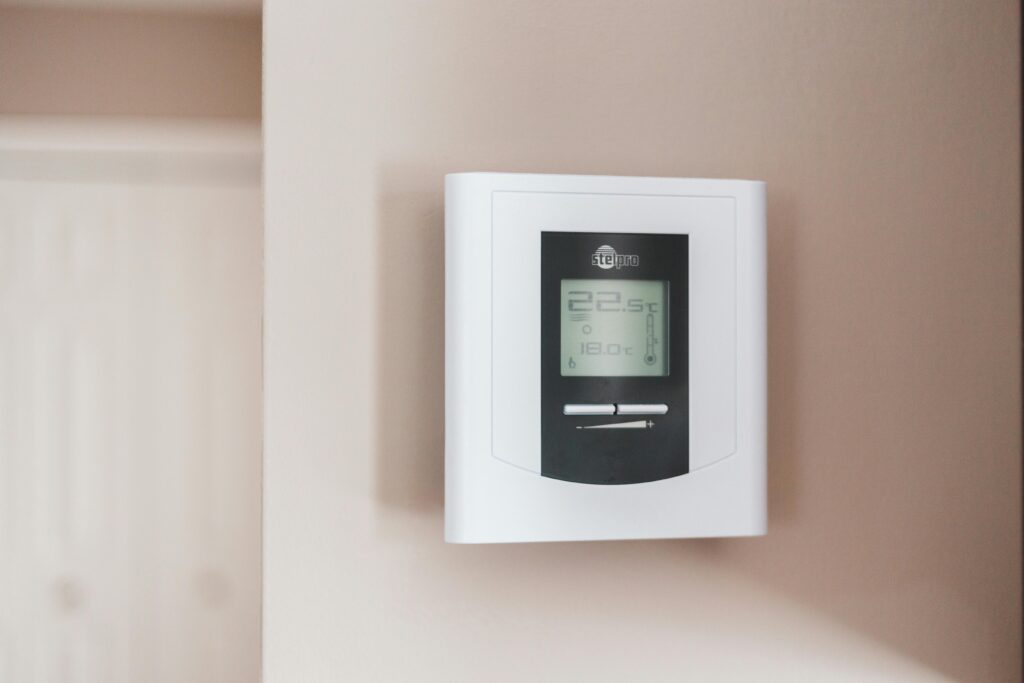A malfunctioning thermostat can lead to discomfort, inefficiency, and unexpected heating repair or air conditioning repair costs. Whether dealing with older or modern smart thermostats, understanding the common causes of thermostat issues can help prevent unnecessary disruptions to your heating and cooling system. Every homeowner should be aware of three reasons for thermostat malfunction.
1. Faulty Wiring or Power Issues
One common thermostat problem is faulty wiring or power issues, which can cause inconsistent temperature readings or a completely non-functional thermostat. Faulty wiring can lead to a malfunctioning thermostat that fails to communicate correctly with your air conditioner, heating system, or heat pump. This issue is particularly prevalent in older thermostats with worn-out or loose connections. Even modern thermostats, such as programmable thermostats or smart thermostats, can suffer from wiring issues if not installed correctly. If your thermostat screen is blank or your thermostat setting doesn’t match the indoor temperatures, it might be due to a power problem or faulty wiring, necessitating thermostat replacement or repair from a trained professional.
2. Dirt and Debris Inside the Thermostat Housing
Another common cause of thermostat malfunction is dirt and debris inside the thermostat housing. A dirty thermostat can lead to miscalibrated temperature readings, causing your heating or cooling system to either overwork or not respond at all. This can result in discomfort, such as experiencing cold air when heat is desired, or heating when cooling is needed. Regular maintenance and cleaning of your thermostat by a professional, especially if it’s an older mechanical thermostat, can help prevent this issue. Modern thermostats are generally less prone to this problem, but even they require occasional checks to ensure accurate operation. Ignoring a dirty thermostat can lead to heating maintenance or even furnace repair, as the system struggles to reach the desired temperature.
3. Incorrect Thermostat Placement and Calibration
A miscalibrated thermostat or incorrect placement can significantly impact your HVAC system’s performance. If your thermostat is located near a heat source, such as a tankless water heater, water heater, or even direct sunlight, it may register higher temperatures and prevent your heating system from running as needed. This is also possible if the thermostat is too close to a lamp, TV, or other heat sources.
Similarly, placing a thermostat near drafts or in direct line with cold air from an air conditioning vent can cause your heating system to overcompensate. Ensuring your thermostat is in a central location away from direct heating or cooling influences is essential. Regular calibration checks are also necessary, as a bad thermostat calibration can cause your cooling system or heat pump to work inefficiently, leading to increased energy bills and discomfort.
Addressing Thermostat Problems for Improved Air Quality and Comfort
A faulty or failing thermostat not only affects temperature control but can also influence overall air quality and comfort in your home. Inconsistent temperatures caused by a broken thermostat can lead to uneven heating or cooling, which may exacerbate issues like humidity or allergens, impacting indoor air quality. Whether dealing with a malfunctioning programmable thermostat or an older mechanical unit, addressing these common thermostat problems promptly is key to maintaining a comfortable living environment. Regular inspection, cleaning, and proper placement can help you avoid these issues and keep your heating and air conditioning systems running smoothly.
By understanding these three reasons for thermostat malfunction, you can take proactive steps to maintain your thermostat’s performance, improve indoor temperatures, and reduce the likelihood of costly repairs or ac maintenance. Whether it’s an older thermostat or a state-of-the-art smart thermostat, proper care and attention can make all the difference in your home’s comfort and efficiency.
